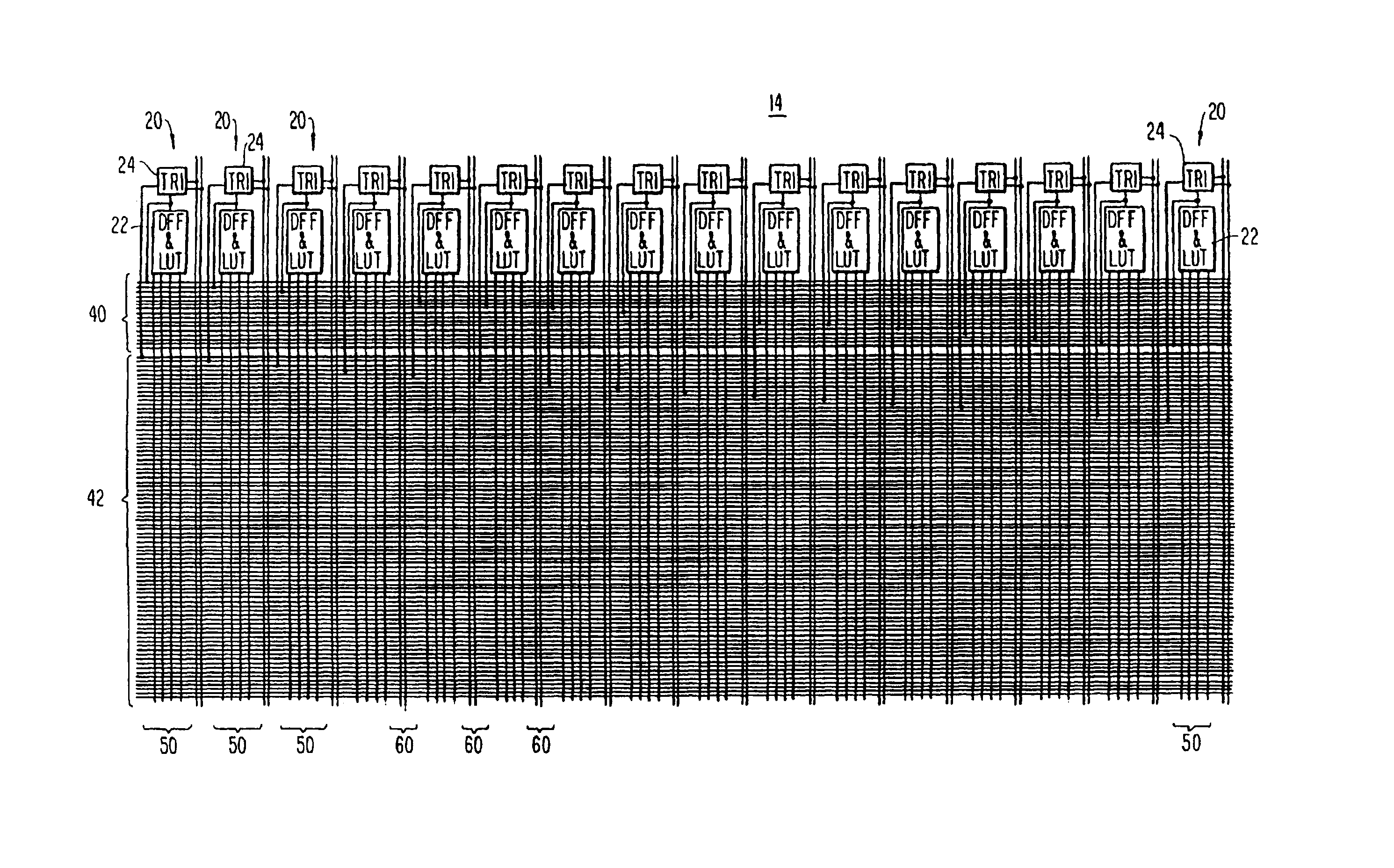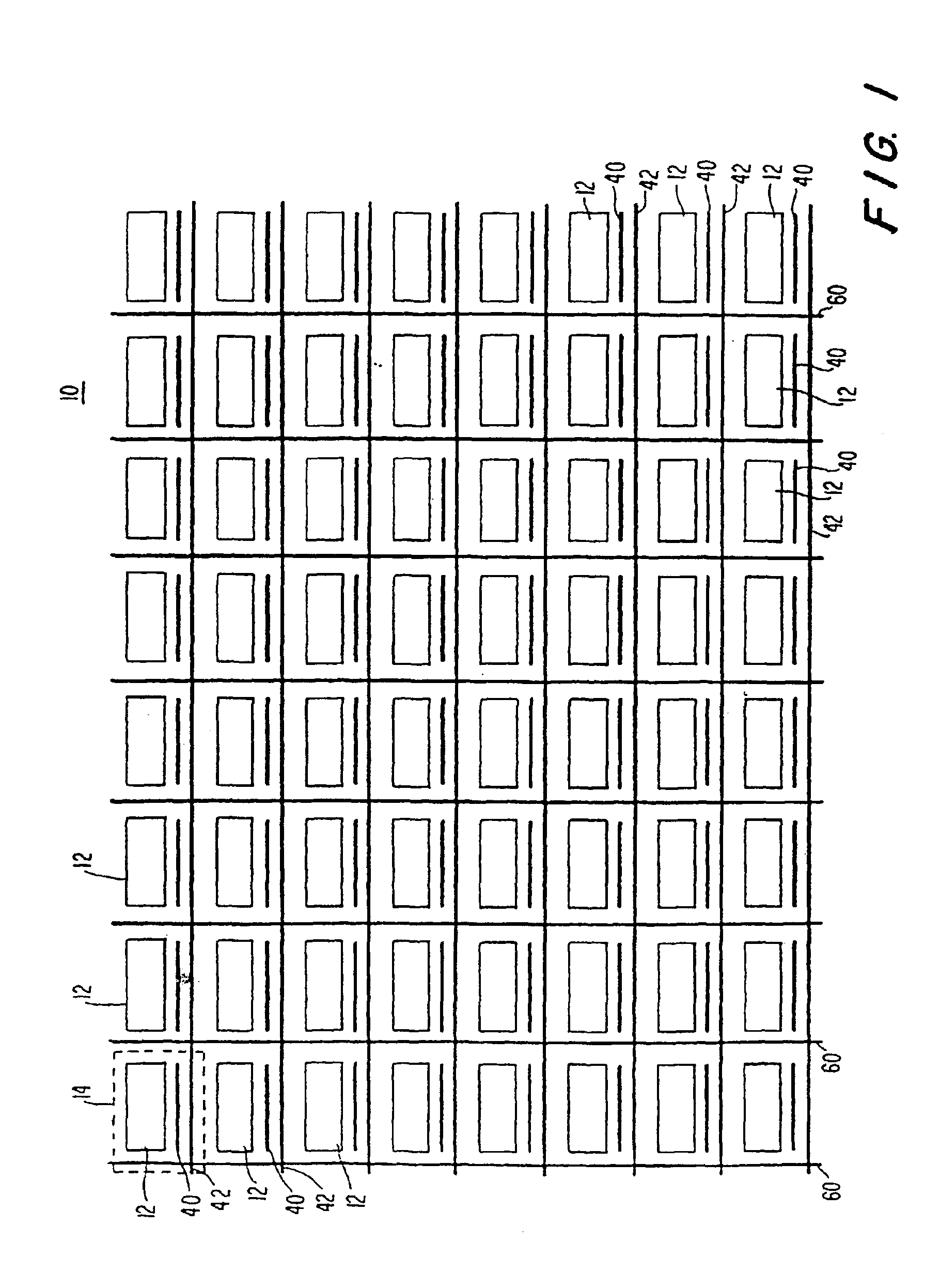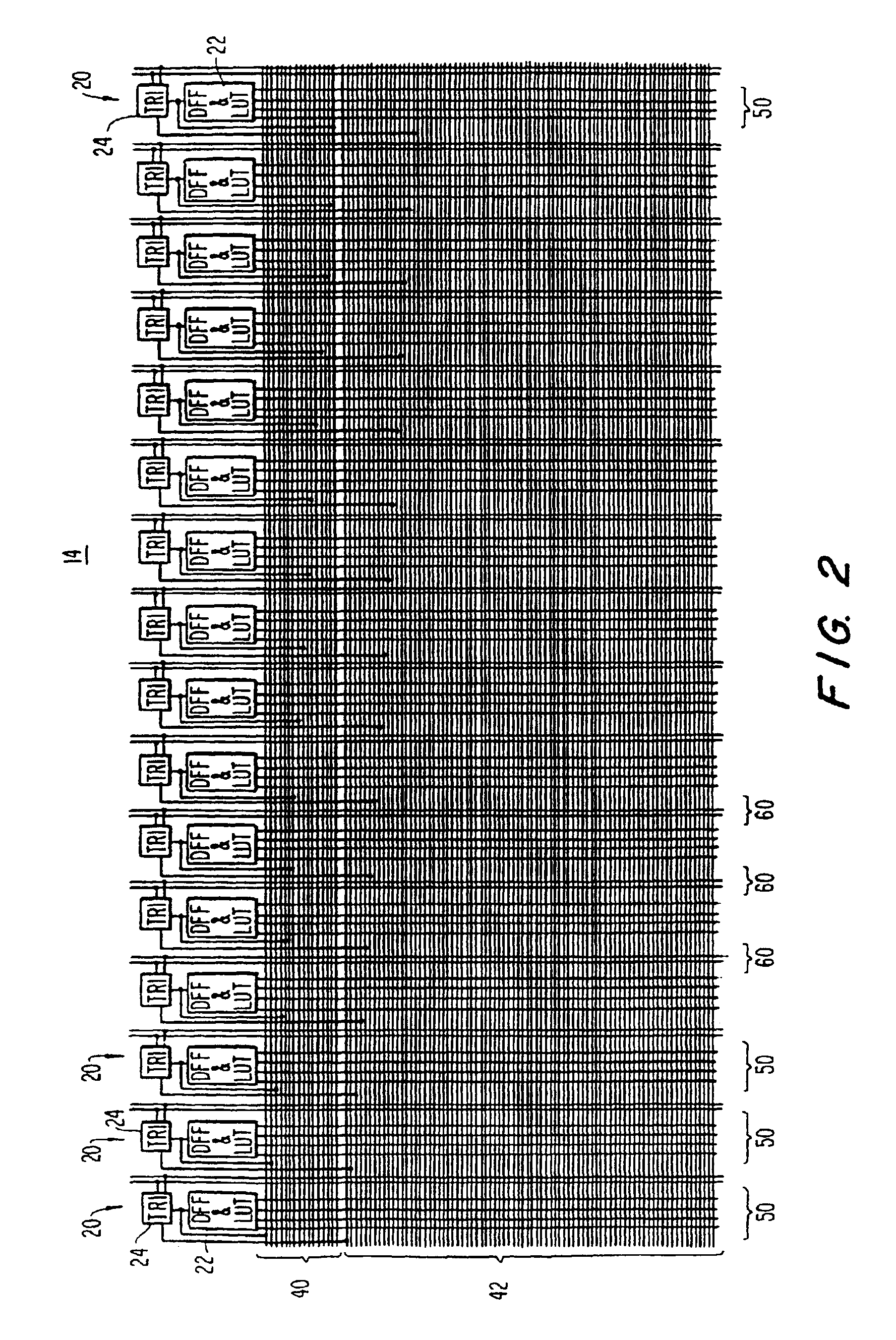Programmable logic array integrated circuits
a logic array and integrated circuit technology, applied in the direction of instruments, computation using denominational number representation, pulse technique, etc., can solve the problems of increasing the complexity of the logic which can be performed, increasing the complexity of the task of programming the circuit,
- Summary
- Abstract
- Description
- Claims
- Application Information
AI Technical Summary
Benefits of technology
Problems solved by technology
Method used
Image
Examples
first embodiment
I. First Embodiment
[0048]As shown in FIG. 1, an illustrative programmable logic array integrated circuit 10 constructed in accordance with the first embodiment of the present invention includes a two-dimensional array of groups 12 of programmable logic elements. The representative portion of FIG. 1 which is surrounded by broken line 14 and which includes a typical group 12 is shown in more detail in FIG. 2. The structure shown in FIG. 2 is sometimes referred to herein as a logic array block or LAB. Accordingly, integrated circuit 10 (FIG. 1) is an eight by eight two-dimensional array of sixty-four LABs 14.
[0049]As can be seen in FIG. 2, each LAB 14 includes sixteen programmable logic elements or macrocells 20, a representative one of which is shown in more detail in FIG. 3. In particular, although other types of logic elements could be used instead, in the illustrative embodiment shown in FIG. 3 each programmable logic element 20 includes a D-type flip-flop and four-input look-up ta...
second embodiment
II. Second Embodiment
[0062]FIG. 10 shows the overall organization of an illustrative programmable logic array integrated circuit 210 constructed in accordance with the second embodiment of the present invention. Not all of the conductors employed in circuit 210 are shown in FIG. 10, but enough is shown in this Fig. to begin the discussion. Each logic module 212 is represented by a small square in FIG. 10. Logic modules 212 are grouped together in groups of eight. Each of these groups is referred to as a logic array block or LAB 214. LABs 214 are arranged in six horizontal rows and twenty two vertical columns on circuit 210. Accordingly, there are a total of one hundred thirty-two LABs 214 and one thousand fifty six logic modules 212 on circuit 210. Each logic module 212 is capable of performing a relatively elementary logic function (discussed in more detail below), but extremely complex logic can be performed by variously interconnecting the logic modules as will now be discussed.
[...
PUM
 Login to View More
Login to View More Abstract
Description
Claims
Application Information
 Login to View More
Login to View More - R&D
- Intellectual Property
- Life Sciences
- Materials
- Tech Scout
- Unparalleled Data Quality
- Higher Quality Content
- 60% Fewer Hallucinations
Browse by: Latest US Patents, China's latest patents, Technical Efficacy Thesaurus, Application Domain, Technology Topic, Popular Technical Reports.
© 2025 PatSnap. All rights reserved.Legal|Privacy policy|Modern Slavery Act Transparency Statement|Sitemap|About US| Contact US: help@patsnap.com



